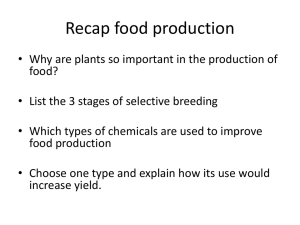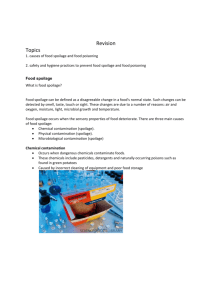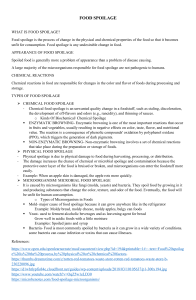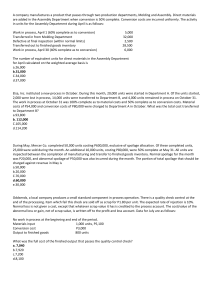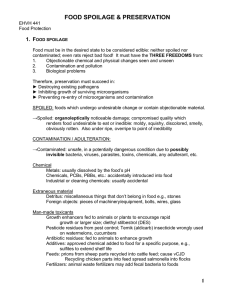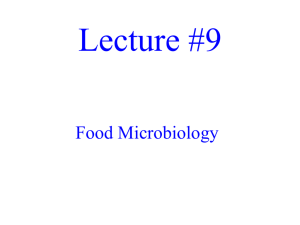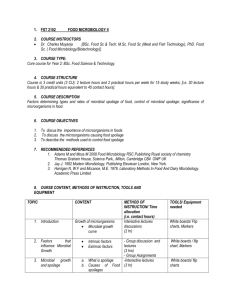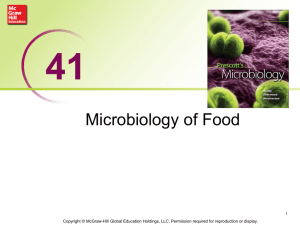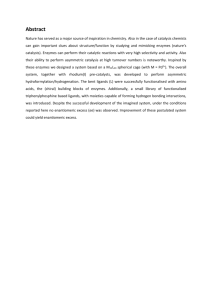Causes of Food Spoilage - manorhousehomeeconomics
advertisement
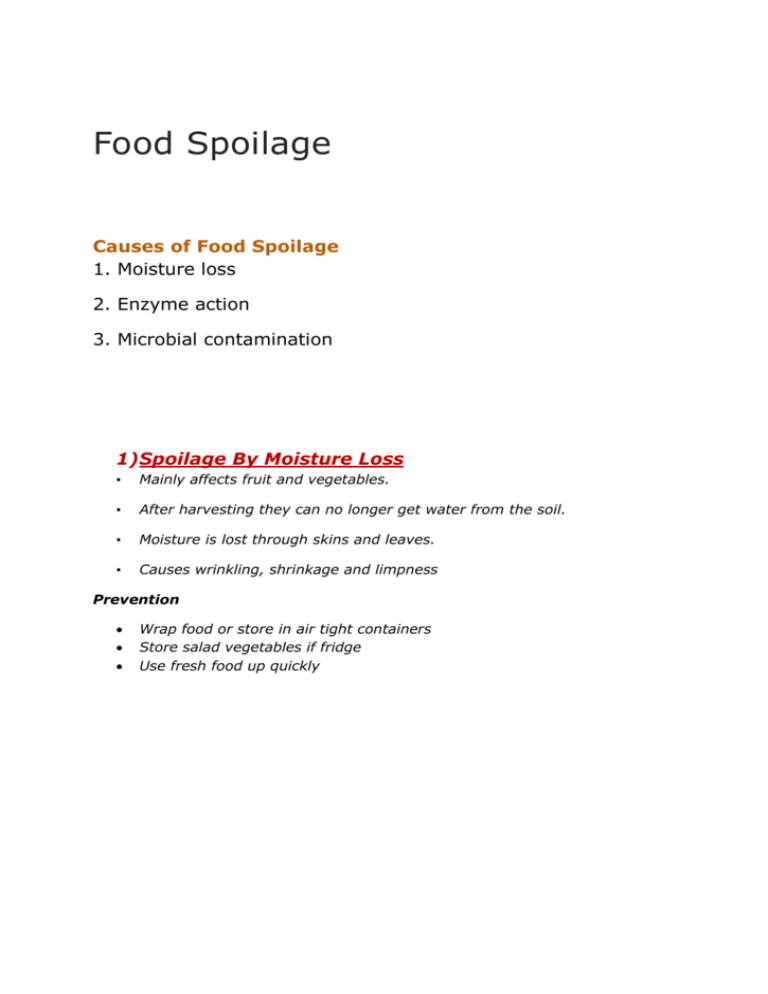
Food Spoilage Causes of Food Spoilage 1. Moisture loss 2. Enzyme action 3. Microbial contamination 1)Spoilage By Moisture Loss • Mainly affects fruit and vegetables. • After harvesting they can no longer get water from the soil. • Moisture is lost through skins and leaves. • Causes wrinkling, shrinkage and limpness Prevention Wrap food or store in air tight containers Store salad vegetables if fridge Use fresh food up quickly 2)Spoilage by Enzyme Action (a) Ripening Enzymes cause food to ripen, then become over-ripe and eventually decay. Starch changes to sugar, colour changes and texture softens, e.g. bananas become soft and black (b) Browning When certain foods are cut and the surface exposed to air, enzymes cause them to turn brown. E.g. apples contain the enzyme oxidase which reacts with oxygen and causes a cut apple to brown (c)Enzymatic rotting Enzymes in fish cause deterioration even at low temperatures, glycogen in the fish is converted to lactic acid by enzymes, which spoils the fish Prevention • Inactivated by heating - cooking, blanching e.g. blanching vegetables • Cold temp slows action - cool storage, e.g. store fish on ice • Enzymes in vegetables work at low temperatures so they must be blanched before freezing. • Acid inactivates enzymes – e.g. lemon juice used to stop browning of apples • Sulphur dioxide stops enzymatic spoilage e.g. dried fruit 3. Spoilage by Microbial Contamination • Yeast, mould and bacteria are the microbes that cause food spoilage. • Food at the optimum temperature is the ideal place for microbes to grow, dangers zone is 5°C- 65°C • Yeast and mould spoil the outside of food and can be seen, e.g. on bread or mandarin oranges • If the food is eaten it will probably be harmless, unless they make mycotoxins. • Bacteria cause spoilage by (a) (b) Making invisible toxins in food (also cause food poisoning) Producing acid in the food by fermenting sugar - e.g. in milk lactose is converted to lactic acid which causes the milk to sour. Prevention Cook food to above 75°C and re-heat to 100°C to destroy microorganisms Store in fridge at below 5°C to slow down growth of micro-organisms, or freezer to inactivate micro-organisms Wrap/cover food loosely with greaseproof paper or store in a lunch box to eliminate oxygen required for growth of micro-organisms Remove food from plastic packaging as plastic packaging creates a buildup of moisture and humidity which encourages growth of microbes.
